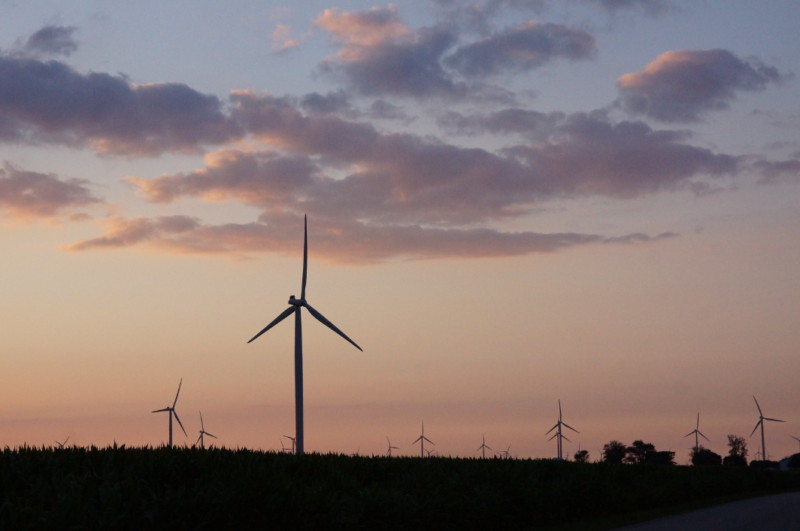Mexico: How Far Have its Institutions Really Come?
The question remains if Mexico has achieved a degree of institutional development consistent with its participation in those organizations.
Until recently Mexico stood out within Latin America as a top potential producer of wind and solar energy. With $4 billion invested in 2015 Mexico is ranked among the top ten markets in the world in terms of clean energy investment. In 2017 Iberdrola announced a plan to build $776 million worth of wind and solar projects in Puebla, Guanajuato, San Luis Potosi and Sonora. In 2019 Mitsubishi’s $1.2 billion Energía Eólica del Sur wind farm opened in the state of Oaxaca in southern Mexico. The 5,000 hectare project includes 132 turbines and a total capacity of 396 megawatts. It is the largest wind farm in Latin America. Over the last few years Mexico’s solar and wind sectors have generated significant interest from foreign investors. Some analysts predicted that if Mexico could shift away from coal and rely on new investments in wind and solar, renewable sources of energy could account for as much as half of total energy consumption. The future looked bright.
Unfortunately, the outlook for wind and solar energy investment in Mexico is dimming fast. Private sector investment in wind and solar has always been affected by local-level risks such as the presence of well-armed organized crime groups in many of the rural stretches of northern Mexico that are best suited to host solar farms and risks related to communal “ejido” land ownership structures in parts of southern Mexico that are well-suited for wind farms.
More recently, however, the sector faces a more significant concern: a federal government that too often seems indifferent or even hostile to fostering investment in renewable energy. Many foreign energy companies are still trying to understand how President Andres Manuel Lopez Obrador’s administration will affect the outlook for wind and solar investment in Mexico. To get a sense of what’s ahead for Mexico’s renewable resource sector, I reached to to Lisa Viscidi, the co-author of a recent report on clean energy auctions in Latin America, and her colleague at the Inter-American Dialogue, a Washington D.C.-based think-tank, Sarah Phillips.
Nathaniel Parish Flannery: How do Mexico's clean energy policies compare to other major economies in Latin America?
Lisa Viscidi: Mexico was a late adopter of policies to attract private players in clean energy generation, but its 2013 energy reform had made the country one of the region’s leaders in luring renewable energy investment. Power supply auctions have been the favored tool in Latin America to attract renewable energy investment, and following the energy reform, Mexico held three such auctions.
In a report I recently co-authored for the Inter-American Development Bank, we found that since 2015, government-led auctions have contributed over $46 billion of investment in the region and boosted capacity by 32 GW. Within the region, Mexico’s auctions were the largest in terms of capacity additions and are expected to add 7.6 GW in capacity and almost $9 billion in investment.
Renewable energy auctions in Latin America and the Caribbean have generally been very successful, with a high level of competition. In many markets, the number of bids far exceeded the number of projects awarded. A significant amount of non-hydro renewable energy projects awarded at low prices. Mexico held some of the most competitive auctions, for example receiving 392 bids for 14 projects awarded in the third auction. In the six countries we examined, wind and solar were the clear winners, responsible for a whopping 77% of the total MW awarded. These technologies were in many cases awarded at record low prices, even beating fossil fuels. This seems to suggest that wind and solar have achieved grid parity in many markets. In Mexico, solar was the distinct favorite, representing 74% of the total energy awarded. In Latin America and the Caribbean overall, non-hydro renewables capacity could almost double compared to 2014 if all the projects awarded in these auctions come online.
Yet in many cases, we are seeing delays in project completion due to a variety of obstacles, including failure to obtain local consent, delays in transmission network expansion, and difficulty obtaining financing. In Mexico, project realization was low in the first auction. Only half of the promised projects had come online, and many others were facing delays, despite deadlines in 2018, according to our analysis conducted last year. This problem also applies to the region as a whole. In five out of the six countries studied, only a third or less of projects awarded in the first auction were completed on time. Later auctions have not yet reached their deadlines for completion, so we will see how those projects fare. In Mexico, some of the developers faced problems with community approval, which delayed projects, including in areas with significant renewable potential. Failure to win the approval of local communities is notorious in Mexico because of a communal land ownership structure that makes negotiation more complex.
[...]
The question remains if Mexico has achieved a degree of institutional development consistent with its participation in those organizations.
Focusing on transnational crime is a top priority of the Obama administration’s policy in Latin America.
Despite reports in recent months that Mexican manufacturing is experiencing a resurgence, Mexico’s industrial sector faces tremendous challenges.
 Patrick Finnegan / Flickr / CC-BY-2.0
Patrick Finnegan / Flickr / CC-BY-2.0